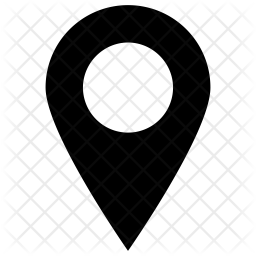Coming up with a good website specification is not easy. It’s something that needs a lot of attention, research, and consideration.
A good website specification will bring everybody on the same page. The client will know what to expect, and the developers will know what to code. The testers will know what to check, and the project managers will know how to plan the project properly.

You might wonder what’s so tricky about outlining goals, tactics, constraints, and so on. And it isn’t tricky once you’ve done it a couple of times.
But for a first-timer, writing a good website specification can be tricky. This is why we’d like to share with you our secret formula for excellent website specifications. Our team has refined this formula throughout more than 10,000 hours of website specification writing across many years.
Writing a Good Website Specification Is Like Building a House.
When you decide that you want to build a house, you don’t just scribble some notes on a piece of paper and draw a quick sketch of your dream house. That’s not something you can give to your builders and expect them to make the most out of it.
Instead, you need an architect who can:
- Understand your vision.
- Design your dream house.
- Guide the builders.
Not only that, but an architect will have to take many other factors into consideration, such as the house foundation, the roof, the walls, etc. Those elements depend on the environment (soil, weather condition, etc.), your personal taste, and your budget.
Nobody Wants to Live in a Risky House.
Let’s imagine for a second that an architect wasn’t hired. The house turned out as you imagined, but it’s situated in an area prone to earthquakes.
You end up enjoying your house for just a few weeks before an earthquake hits. Your walls fall because they weren’t made to accommodate this type of climate. So now you have to spend even more money rebuilding something when it could have been avoided.
The same thing goes with a website specification. Websites depend on the needs of your target audience, the building duration, your personal tastes, etc.
So if you are about to build a marketplace website or an e-commerce shop, certain practices have to be followed.
After all, you don’t want to end up with a faulty website.
How to Write a Website Structure That Works
When you spend thousands of hours writing website specifications, you tend to notice a certain pattern. You can clearly see what works and what doesn’t. Today, we’d like to share with you the structure that we’ve found is 100% foolproof.
When designing your website structure, you have to concentrate on:
Website Lifetime
We recommend that you design and build the first version of the website for a time span of 12 to 24 months. That is because websites evolve fast.
Website Specifications Objectives
These are the goals of the website. And the best way to uncover that is by answering the following two questions:
- If your website were an employee, what its job description would be?
- At the end of the day, how will you know if the website has done a good job?
Website Specifications Non-Objectives
There will be certain things you’ll decide not to build in the first rollout when writing website specifications. Just like houses, websites are best built in layers or stages. And here you have a list of items you want to postpone for the next website version.
How to Measure the Success of the Project
Define two to three KPIs that you’d like to measure. A few examples of KPIs are conversion rate, number of qualified leads, average session duration, and time on page.
Site Menu
Here you’ll list the pages you’d like to have in the top menu as well as in the footer menu. You need to think about what your website visitors are most interested in. Is it the shop page, the about us page, or the blog section?
Site Pages
Not all the pages will appear in the menu. But in this section, you’ll have a complete list of all the pages from the website. Think of it as the blueprint of your website. Also, for every page, you want to mention what visual elements you’d like to include. Make sure you include everything when writing your website specifications.
User Roles
List here the types of users you will have. For example, on a marketplace website, you will have visitors, vendors, buyers, and admins.
User Stories
For every user role from above, we need to depict the features from the user journey. However, a user story is a thin-sliced feature, part of the user journey, describing what has to be achieved, usually following this format: As a [user role], I want to [goal/desire] so that [benefit].
Website Specifications Tasks
Here you have to list the specific tasks that a developer needs to complete to have each specific user story delivered.
Project Risks
Add the risks of this project and how do you plan to mitigate these risks.
Plug-Ins and Themes
We usually recommend a no-code approach to building websites. When using WordPress, make a list of all the plugins that you decide to use for this website. Choose a light weight theme like Astra WordPress theme.
Conclusion
Building a website specification isn’t necessarily hard, especially when you have all the information you need at the tips of your fingers. But there are certain trade secrets that you might miss. This is why having a developer look over your website specification is probably a good idea.
But if you don’t want to get professional assistance, then following the structure above is the closest thing you’ll get to a professional website structure.





